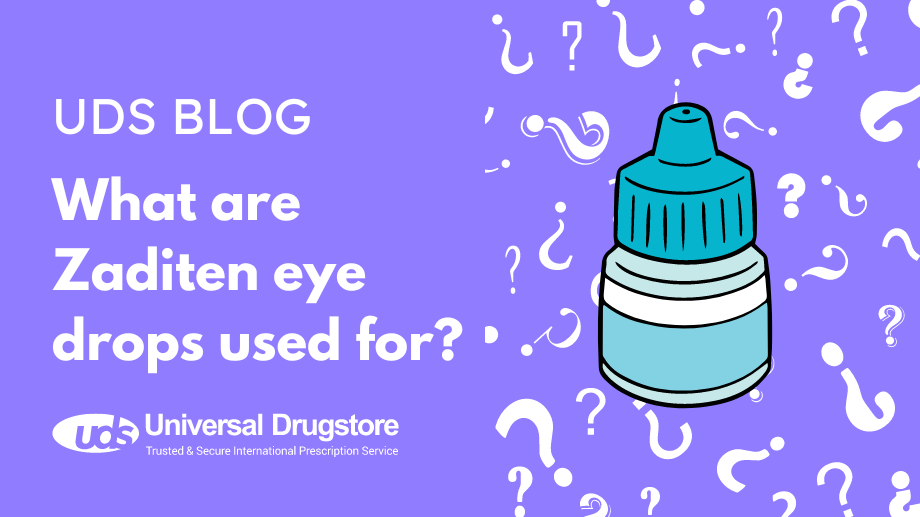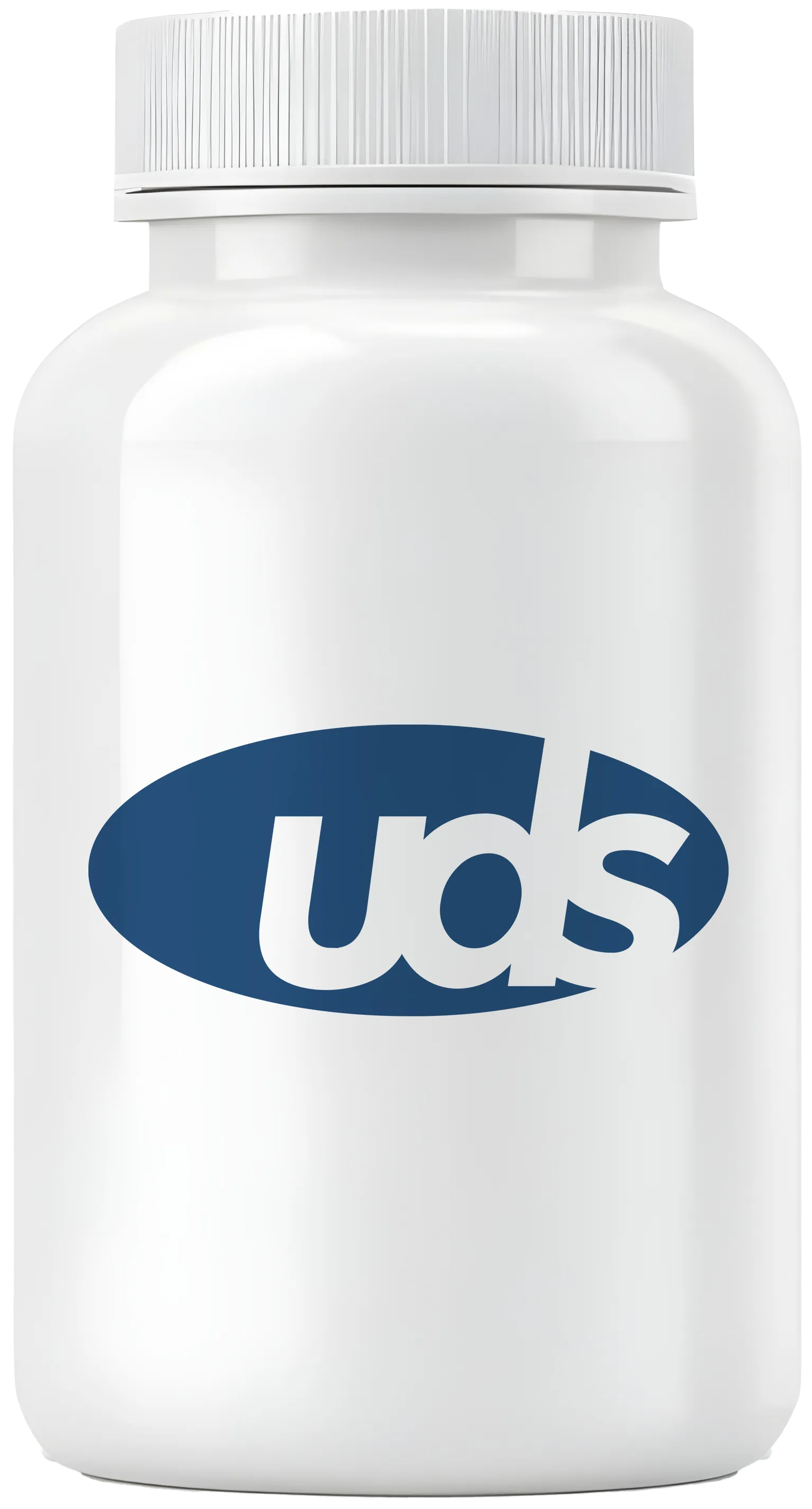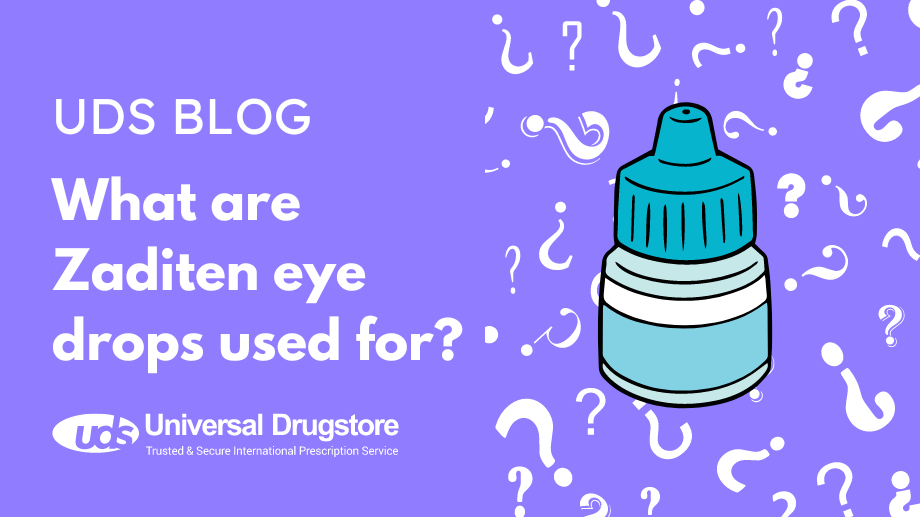What are Zaditen eye drops used for?

Zaditen eye drops (ketotifen fumarate) are an antihistamine and mast cell stabilizer that is commonly used for the short-term relief of symptoms of seasonal allergic conjunctivitis (itchy, watery eyes) in adults and children 3 years of age or older. Allergic conjunctivitis typically occurs if you already have seasonal allergies. You develop symptoms when your eyes come into contact with allergens such as dust, animal fur, pollen, car fumes, chlorinated water, or cigarette smoke. Symptoms of allergic conjunctivitis include a clear, watery discharge, puffy eyes, burning, and redness. Itching, which can sometimes be severe, may or may not occur. This type of conjunctivitis is not contagious.
Ketotifen works by blocking the release of histamine, a substance in the body that contributes to allergic symptoms. It is also a mast cell stabilizer, which prevents them from releasing additional substances that cause the allergic reaction.
Read on to learn more about Zaditen, including how to use it, its side effects and precautions and we will answer some frequently asked questions.
Zaditen eye drops FAQs
What conditions are Zaditen eye drops typically prescribed for?
Zaditen ophthalmic solution contains the active ingredient ketotifen fumarate. It is an antihistamine and mast cell stabilizer that is used for the short-term treatment of seasonal allergic conjunctivitis in adults and children 3 years of age or older.
What are the side effects of Zaditen eye drops?
The most common side effects of Zaditen eye drops seen in clinical trials include:
- Eye irritation
- Eye pain
Other possible side effects of Zaditen eye drops include:
- Dry mouth
- Dry eyes
- Eyelid disorder
- Stuffy/runny nose
- Headache
- Blurred vision
- Eczema
Rarely, Zaditen eye drops may cause serious side effects such as:
- Serious, life-threatening allergic reactions, including anaphylaxis.
Symptoms of anaphylaxis may include urticaria (raised red patches on your skin or hives), swelling of your face, lips, tongue, or throat, and shortness of breath. Seek immediate medical attention if you experience any symptoms of a serious allergic reaction.
- Damage to soft contact lenses
Zaditen eye drops should not be used to treat eye irritation caused by wearing contact lenses. It contains benzalkonium chloride as a preservative that can be absorbed by soft contact lenses. If you wear soft contact lenses, remove them before you use Zaditen eye drops. You should wait at least 10 minutes after you use the eye drops to wear your contacts again.
- Impairment when driving or using machines
During the first few days of treatment with Zaditen eye drops, your reactions may be impaired, and therefore should exercise care when driving a vehicle or operating machinery.
Disclaimer: These are not all of the possible adverse reactions of Zaditen eye drops. You should always seek medical advice from a healthcare professional for any questions or concerns about your medical condition or treatment. You should also read all the patient information, including your Medication Guide that comes with Zaditen. You can report side effects to the FDA at www.fda.gov/medwatch or call 1-800-FDA-1088.
How do Zaditen eye drops work?
The active substance in Zaditen eye drops is ketotifen fumarate, which is a histamine H1-receptor antagonist and a mast cell stabilizer. Blocking this receptor and stabilizing mast cells help to decrease ocular (eye) allergy symptoms by reducing your body’s response to allergens (substances that cause allergic reactions). This can help treat symptoms such as itchy, watery, or swollen eyes.
What should you tell your healthcare provider before taking Zaditen eye drops?
You should not take this medication if you have had a hypersensitivity reaction to ketotifen fumarate or any of the inactive ingredients in the formulation. Zaditen multi-dose eye drops contain 0.25 mg/mL of ketotifen fumarate and inactive ingredients such as benzalkonium chloride (preservative), glycerol, and sodium hydroxide. Zaditen single-dose units do not contain a preservative. See the package insert for all the inactive ingredients of the Zaditen product you are prescribed to be sure you are not allergic to it.
Shop Medications
You should be sure your healthcare provider is aware of all your medical conditions as they may be contraindications or you may need increased monitoring during treatment, including:
- Pregnant or plan on becoming pregnant
- Breastfeeding or plan to breastfeed
The safety of using Zaditen eye drops during pregnancy has not been established. Zaditen eye drops should not be given to pregnant women except if needed and the benefits outweigh the potential risks.
While there is no human data available, this drug is likely excreted in human breast milk. However, because topical use of Zaditen eye drops will not likely cause detectable amounts of ketotifen in breast milk, it can be used while breastfeeding.
Are there any drug interactions with Zaditen eye drops?
When Zaditen eye drops are taken with other prescription drugs, over-the-counter medications, vitamins, herbal products, and supplements, it may change how they work or increase the risk of side effects. There are no interactions listed for Zaditen eye drops when it is used at the recommended dose. However, you should still be sure your healthcare provider is aware of all your current medications.
How do you take Zaditen eye drops?
Zaditen multi-dose eye drops
- Wash your hands.
- Tilt your head back.
- Pull down your lower eyelid with your finger and hold the bottle upside down over the eye with your other hand.
- Instill one drop into your eye without touching your eye/eyelid with the dropper tip.
- Close your eye and press the tip of your finger against the inner corner of the eye for 1–2 minutes.
- Repeat these steps to treat the other eye if needed.
- Put the cap back on the bottle immediately after using it.
Zaditen single-dose unit eye drops
- Wash your hands before use.
- Open the blister pack and tear off one single dose unit from the strip.
- Hold the single dose unit by the tab and turn it upside down.
- Tap it gently until all the air bubbles are above the solution.
- Twist the tab off of the single dose unit.
- Hold the single dose unit in one hand between your thumb and forefinger.
- Tilt your head back, and use a finger on your other hand to pull down your lower eyelid.
- Instill one drop into the pouch between your lower eyelid and your eye, and then release your lower lid.
- Close your eye and gently press the inner corner of your eye with your finger for 1 minute.
- Repeat these steps to treat the other eye if needed.
- Discard each single dose unit right after using it. Keep the remaining single dose units at temperatures below 77°F (25°C), preferably in the original container.
How often can you use Zaditen eye drops?
Your dose of Zaditen eye drops will be determined by your healthcare provider. The typical dose of Zaditen eye drops is as follows:
- For adults and children 3 years of age and older: The usual dose is 1 drop in the affected eye(s) twice daily.
The safety and effectiveness of using Zaditen eye drops in pediatric patients below the age of 3 years have not been established.
How should you store Zaditen eye drops?
Zaditen eye drops should be stored according to the instructions on the folding box. It should not be used after the date marked “EXP” on the pack and as with all medications, keep Zaditen eye drops out of the reach of children.
Can Zaditen eye drops be used for pink eye?
If you think that you or your child has allergic conjunctivitis (pink eye due to allergies), you can try Zaditen (ketotifen) eye drops, 1 drop twice a day as needed. If these do not help after a few days, you may have bacterial conjunctivitis (pink eye due to a bacterial infection).
Allergic conjunctivitis occurs more commonly if you already have seasonal allergies. It develops when you come into contact with a substance that triggers an allergic reaction in your eyes such as dust, animal fur, pollen, car fumes, chlorinated water, or cigarette smoke. Symptoms include a clear, watery discharge, puffy eyes, burning, and redness. Itching, sometimes severe, may or may not occur. This type of conjunctivitis is not contagious.
Bacterial conjunctivitis is an infection that is typically caused by the same bacteria that causes strep throat. It is contagious and easily spread through personal contact in schools, workplaces, or other crowded places. It can also be caused by poor hygiene (touching your eye with unclean hands) or using contaminated eye makeup. Symptoms include discharge from the eye, mostly mucus or pus, crusty eyelids or eyelashes after sleeping, a constant feeling of having something stuck in your eye, light sensitivity, and blurred vision. This type of conjunctivitis requires an antibiotic eye drop or ointment to treat the infection.
Related Medications
- Zaditor Eye Drops (ketotifen)
- Pataday Eye Drops (olopatadine)
- Patanol Eye Drops (olopatadine)
- Lastacaft Eye Drops (alcaftadine)




